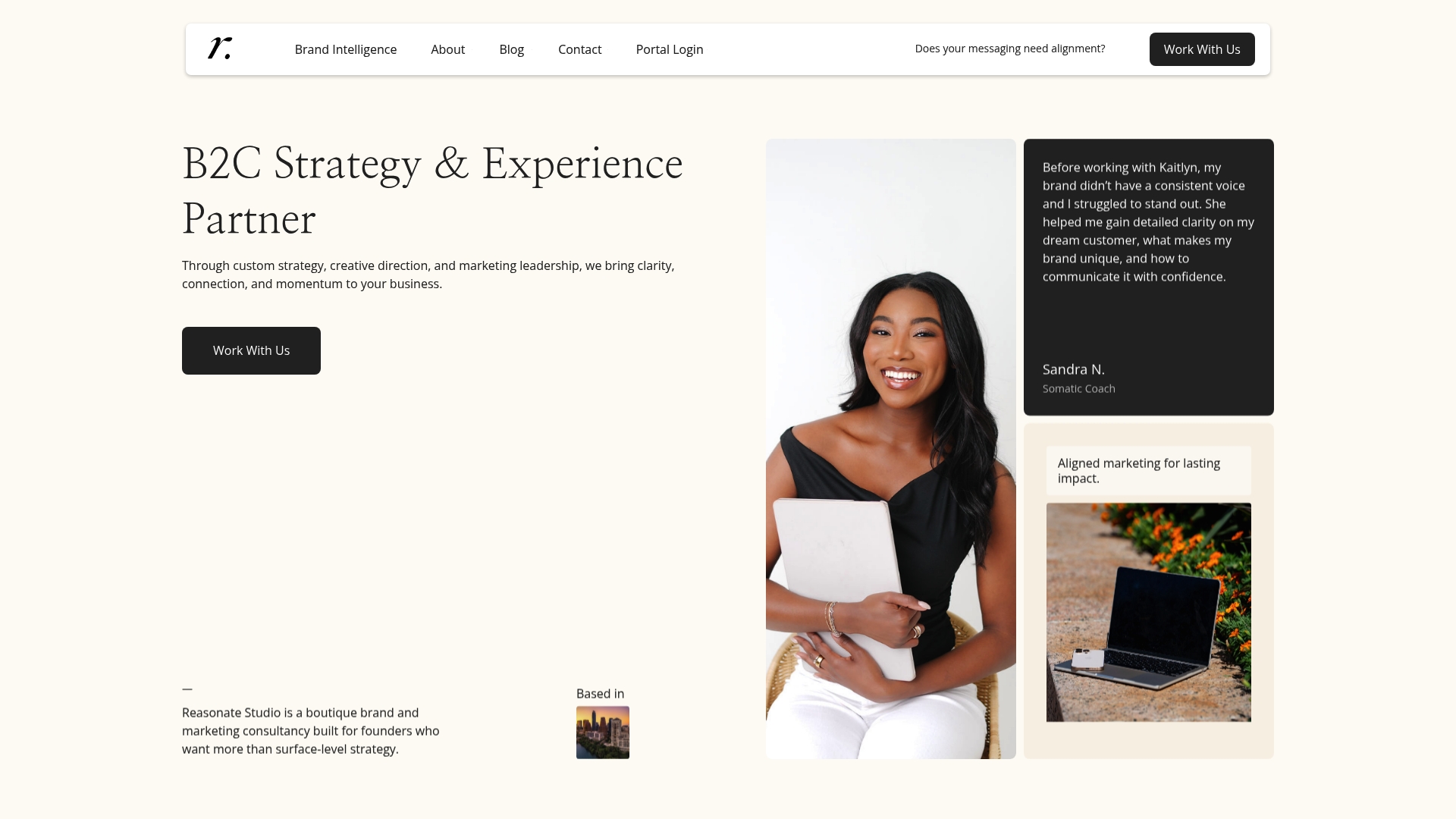Why Update Brand Messaging: Essential Guide for Growth

Discover how to improve brand perception with clear, step-by-step actions that help align your strategy, messaging, and client experience for lasting results.

More than 80 percent of customers say they trust a brand based on consistent values and authentic experiences. Building a standout brand is no longer just about a clever logo or catchy slogan. It is about forming a real bond between what you believe in and the people you want to reach. Understanding how to clarify your purpose, build visual harmony, and create meaningful customer touchpoints will set your business apart in a crowded marketplace.
Building a robust brand starts with understanding your fundamental purpose and the people you aim to serve. This step involves creating a deep connection between what your business stands for and who your ideal customers are.
To clarify your core brand values, begin by reflecting on your business’s unique mission. What problem are you solving? What principles guide your work? Your brand values are more than marketing buzzwords they represent the authentic heartbeat of your organization. Consider conducting internal discussions or workshops where you and your team explore what truly matters. As research indicates, core brand values serve as a moral compass that ensures consistency in behavior and communication.
Next, shift your focus to understanding your target audience. This means going beyond basic demographics and diving into their psychological landscape. Who are they? What challenges do they face? What motivates them? Create detailed audience personas that capture not just statistical data but emotional insights. Align your brand values with your audience’s aspirations this creates a powerful resonance that transforms casual interactions into meaningful connections. The goal is to develop a sense of belonging and responsibility toward your brand.
One critical warning: authenticity is key. Do not fabricate values that sound impressive but do not genuinely reflect your business. Customers can quickly detect inauthentic messaging. Your values must be real, actionable, and consistently demonstrated.
Once you have crystallized your brand values and audience understanding, you are ready to move toward crafting a compelling brand narrative that speaks directly to the hearts of your ideal customers. Learn more in our guide on brand storytelling.
Aligning your brand’s messaging with its visual identity is like creating a perfect harmony where words and images sing the same song. This critical step transforms your brand from fragmented communication into a powerful cohesive experience that resonates deeply with your audience.
Start by conducting a comprehensive brand audit. Review all existing visual elements color palettes, logos, typography, imagery and evaluate how well they communicate your core brand values. Ask yourself honest questions. Do your visuals truly reflect the personality and purpose you defined earlier?
 Research shows that when visual identity and brand positioning align perfectly, it creates a trust building experience that significantly improves audience engagement and conversion rates.
Research shows that when visual identity and brand positioning align perfectly, it creates a trust building experience that significantly improves audience engagement and conversion rates.
Next focus on creating a consistent visual language. This means developing clear guidelines for how your brand looks feels and communicates across different platforms. Select colors that emotionally connect with your brand values. Choose typography that speaks to your brand personality. Design graphics and imagery that tell your brand story without words. Your visual elements should work together like a well choreographed dance each piece reinforcing and amplifying your core message.
One critical warning graphic design consistency matters more than creativity. While innovation is important your visual branding should remain recognizable and predictable. Wild fluctuations can confuse your audience and erode the trust you are working hard to build.
As you refine your visual identity prepare to translate these guidelines into practical applications across all your marketing channels. Check out our brand positioning guide for more detailed strategies on creating a compelling visual narrative.
Strengthening your brand perception means creating meaningful connections at every point where customers interact with your business. This step is about transforming routine interactions into memorable experiences that reinforce your brand values and build lasting relationships.
Map out your entire customer journey from first awareness to post purchase support. Identify every potential touchpoint website visits social media interactions email communications customer service calls and physical interactions if applicable. Research indicates that strategic typography and layout in marketing materials can significantly improve readability and engagement guiding customers through their experience more effectively. Focus on making each interaction consistent intuitive and aligned with your brand personality. Think about how your messaging tone visual design and communication style can create a seamless experience that feels authentic and intentional.
Prioritize digital touchpoints with particular care. Your website should be more than a digital brochure it should feel like a welcoming environment that reflects your brand essence. Ensure your online platforms use clear navigation intuitive design and responsive layouts that make interaction effortless. Create content that speaks directly to your audience answering their questions and addressing their needs before they even ask. Implement strategic communication frameworks that make customers feel heard understood and valued at every interaction.
One critical warning do not attempt to be everywhere at once. Quality trumps quantity in customer touchpoints. Choose platforms and interaction methods where your ideal audience actually exists and invest deeply in creating exceptional experiences there rather than spreading yourself thin across multiple channels.
As you refine your customer interaction strategy prepare to track and measure the impact of your improvements. Learn more about customer experience optimization to continue evolving your approach.
Building a strong brand presence requires a strategic approach to visibility that goes beyond random marketing efforts. This step is about creating a deliberate and unified campaign that keeps your brand consistently in front of your ideal audience while reinforcing your core message.
Begin by developing a comprehensive content calendar that aligns with your brand values and audience insights. Research demonstrates that consistent alignment in brand identity design builds recognition and ensures a unified message that enhances visual appeal. Select channels where your target audience is most active whether that is social media platforms professional networks industry publications or targeted digital advertising. Create a content mix that balances educational valuable content with brand storytelling. Each piece of content should feel like a natural extension of your brand voice maintaining a consistent tone color palette and messaging approach.
Implement a multi channel approach that creates a cohesive brand experience. This means ensuring your visual and communication style remains uniform across different platforms. Whether someone encounters your brand through a LinkedIn post an email newsletter or a website banner they should immediately recognize your unique identity. Pay special attention to the nuances of each platform while maintaining core brand consistency. Academic research highlights that congruence in visual identity and brand associations is crucial for maintaining a positive corporate image and stakeholder support.
One critical warning avoid content repetition without adding value. Consistency does not mean simply reposting the same material across platforms. Instead focus on creating platform specific content that feels native to each channel while preserving your core brand narrative.
As you roll out your visibility campaigns prepare to track engagement metrics and refine your approach. Explore our brand positioning strategies to continue evolving your marketing approach.
Successful brand perception is a dynamic journey that requires continuous listening and strategic adaptation. This final step focuses on creating a responsive feedback loop that allows your brand to evolve based on real world insights and customer experiences.
Establish multiple channels for collecting meaningful feedback. This includes direct customer surveys social media sentiment analysis customer service interaction reports and informal conversations. Think of feedback collection as aligning different representations of your brand experience similar to how research suggests cross modal attention enables more grounded representation learning. Implement both quantitative metrics like conversion rates and engagement scores and qualitative insights that capture emotional responses to your brand. Pay special attention to patterns that emerge across different feedback sources identifying consistent themes that signal areas for potential improvement or celebration.
Create a structured process for reviewing and acting on feedback. Schedule regular strategy review meetings where you systematically analyze collected insights. Develop a framework that categorizes feedback into actionable segments urgent improvements potential innovations and positive reinforcement areas. This approach transforms feedback from passive information into an active strategic tool. Remember that adjusting your strategy is not about radical changes but thoughtful incremental refinements that keep your brand aligned with customer expectations and market dynamics.
One critical warning avoid becoming defensive or dismissive of negative feedback. Criticism is a gift that provides direct insight into how your audience perceives your brand. Approach each piece of feedback with curiosity and a genuine desire to understand and improve.
As you complete this final step prepare to integrate these insights into a continuous improvement cycle for your brand strategy. Discover our brand evolution techniques to keep your brand dynamic and responsive.
Improving brand perception is not just about surface-level changes it is about aligning your core values with the authentic needs of your audience as highlighted in the article. If you find yourself struggling to create consistent messaging, build trust across customer touchpoints, or maintain lasting visibility, these challenges can stall your growth. What you need is a clear, actionable roadmap that connects every part of your brand—from foundational values to ongoing engagement—into one cohesive system.
![]()
At Reasonate Studio, we understand these exact pain points. Our proprietary Aligned Impact Model™ guides you through uncovering your brand’s true identity and aligning every communication touchpoint for sustainable impact. We focus on long term strategies that build confidence and measurable outcomes not quick fixes. Whether you want to strengthen your brand story, enhance customer experiences, or implement consistent visibility campaigns our blend of strategy, creativity, and operational discipline will help you scale effectively with clarity.
Begin your transformation today by exploring how our tailored solutions can help you grow. Visit Reasonate Studio to discover how we partner with entrepreneurs and small businesses for meaningful growth.

Are you ready to stop guessing and start building a brand that truly resonates? Take the first step toward elevating your brand perception and driving sustainable growth with Reasonate Studio’s strategic approach. Learn more about how you can bring this vision to life and position your business for lasting success by joining us now.
Start by reflecting on your business’s unique mission and the problems you aim to solve. Conduct internal discussions with your team to explore what truly matters and document the principles that guide your work.
Create audience personas that encapsulate both demographic data and emotional insights. Conduct surveys or interviews to collect information on their challenges and motivations, aiming to align your brand values with their aspirations.
Conduct a brand audit to evaluate your existing visual elements, including colors, logos, and typography. Develop clear guidelines to ensure your visual language communicates your core values consistently across all platforms.
Map out the entire customer journey and identify each touchpoint, from website visits to customer service interactions. Work on making each interaction consistent and aligned with your brand personality to create a seamless experience for customers.
Set up multiple channels for collecting feedback, such as surveys and social media analysis. Schedule regular strategy review meetings to reflect on this feedback and categorize it into actionable insights to improve your brand perception steadily.
Develop a comprehensive content calendar that aligns with your brand values and resonates with your target audience. Use a multi-channel approach to ensure consistency in visual and messaging styles across all platforms.